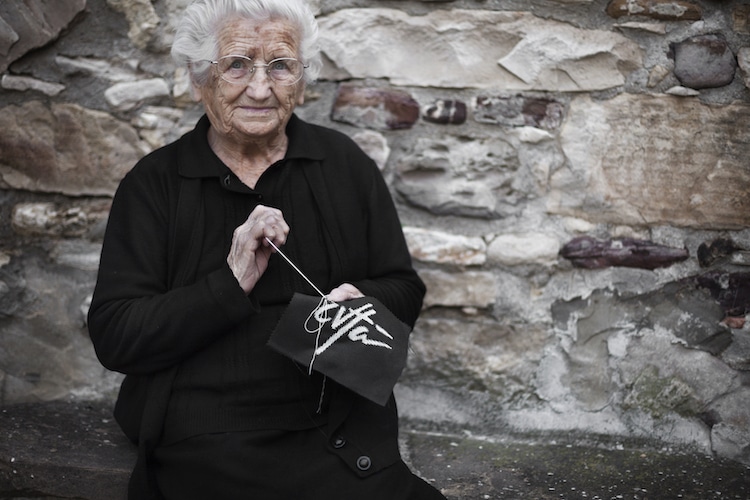
Zia Rosaria, 91-years-old, continues to live in the abandoned portion of Civitacampomarano.
With one in seven inhabitants leaving Italy’s small villages for prospects elsewhere, it’s estimated that one-third of the country’s villages are at risk of depopulation. One such town, Civitacampomarano, spurred on by what started as a strange coincidence, is using art to turn around the tide of abandonment that is washing over it.
In 2014, Ylenia Carelli, president of Civitacampomarano’s cultural organization, saw an interview with Italian street artist Alice Pasquini on television. Liking what she saw, she sent an email inviting the artist to paint in her town. With only 400 inhabitants, the chances were unlikely, but to her surprise, Pasquini responded, not only saying that she would come and paint, but that her now 100-year-old grandfather was actually from the town.
And with this coincidence, CVTà Street Fest, which I help organize, was born. Now in its second year under the artistic direction of Pasquini, the goal is to use art to bring a focus to this tiny village in the Italian region of Molise. From April to June, five artists from four different countries came to leave their mark on the village. And while they may have left a visual sign, what they took away was the heart and spirit of a population that is tied to its roots. With all the schools closed and only a handful of children still in town, most of the citizens are elderly but have embraced the street artists with open arms.

Civitacampomarano, in the Italian region of Molise, has 400 inhabitants on paper, but the reality sees even fewer people who continue to live in the town.

Zio Nicola exchanging words with artistic director Alice Pasquini, whose grandfather was the town’s doctor for many years.
This year, in April, Italian artist Gola Hundun arrived, using the surrounding nature to inspire a mural that evokes this rural setting. In May, Argentinian artist Francisco Bosoletti and Brazilian artist Alex Senna spent several days in the village, with local teenagers assisting them along the way. One piece by Alex Senna was inspired by the local women he saw moving through the hilly town with their shopping bags, while Bosoletti carried out part of a new project that sees him painting walls in reverse negative, the final result only to be visible by taking a photo and placing a filter on the image.
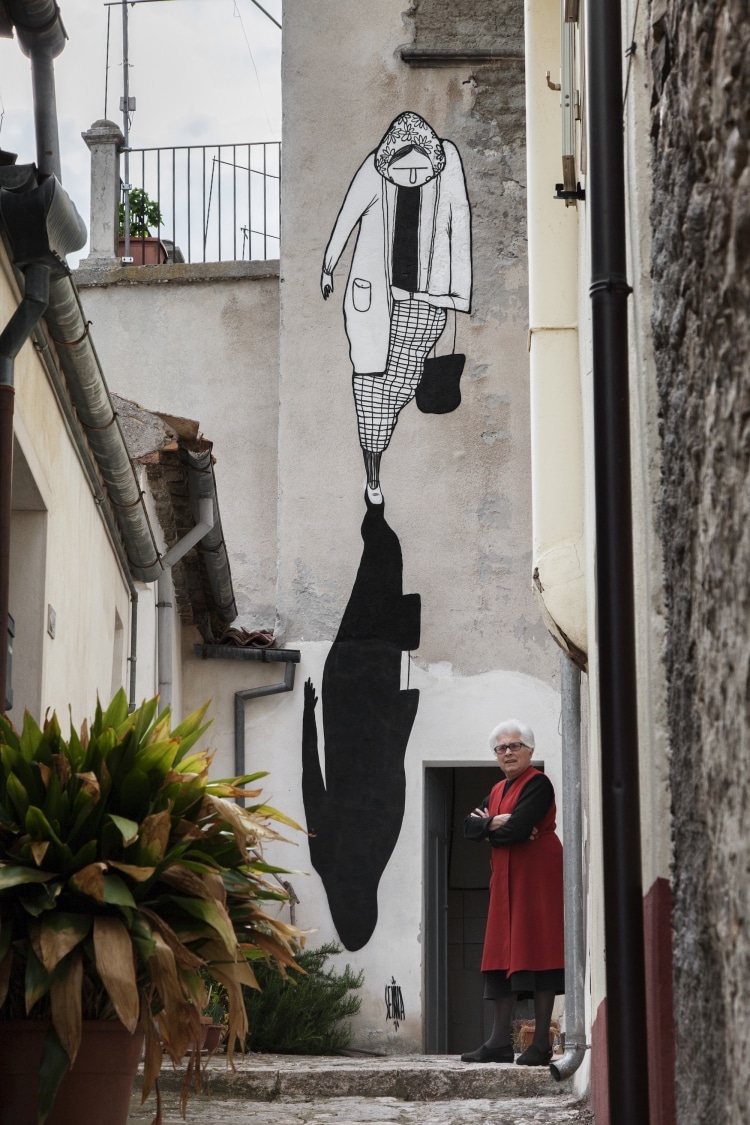
Street art by Alex Senna
The festival culminated with four days of activity in early June, from an acclaimed DJ and breakdancer teaching local children how to mix records and bust moves, to the final two artists—NeSpoon and Maria Pia Picozza—completing their works. NeSpoon, whose art is based on lacework, was welcomed into the home a local lacemaker, who proudly showed off her creations. By coincidence, the type of lace patterning sewn in the village matched the pattern she was to later paint on the wall of a seamstress’s house during her visit. It’s these personal experiences that have helped create a lasting impression both on the artists and the people of Civitcampomarano.
In addition to the 2D works of these artists, Maria Pia Picozza, who creates wire sculptures full of movement, produced an incredible installation of birds. Flying from within a house to the exterior environment, they are a reminder to not forget that which is abandoned.
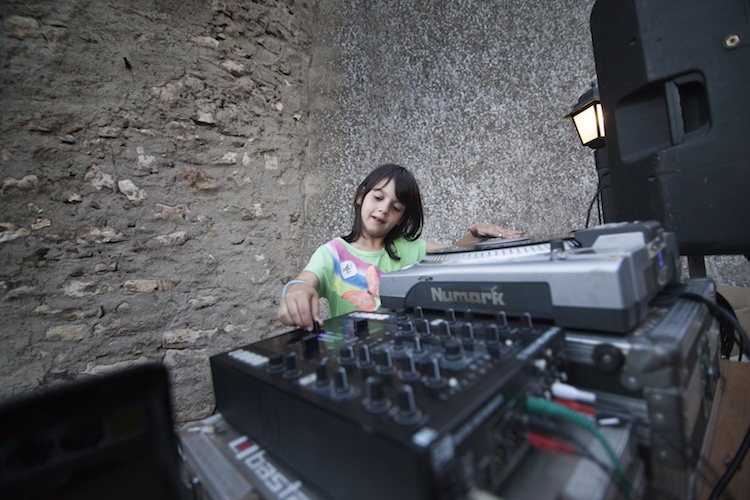
Mary, one of the few children who lives in the village, learning to mix records during the festival.
With over 3,500 people coming through town over the course of four days and new commercial activities like a butcher and ice cream shop opening up, the winds of change are coming to Civitacampomarano. By using art as a framework, the new life given to Civitacampomarano is now in the hands of the inhabitants, as they get used to seeing new faces pass through town, wandering the abandoned streets to view the artwork and feel the spirit of this magical place.
“CVTà Street Fest was born from the idea to never give up; to not just leave these places that at one time were full of vitality and full of Italian history,” shares Pasquini. “By using street art, which maybe resonates more with the younger generation, as an excuse, we hope that this forgotten Italy is rediscovered.”
Civitacampomarano, a small village in Italy, hosts a street art festival that is helping combat depopulation. The town’s population is 400, with even fewer full-time residents. However, more than 3,500 people attended the festival this year.

Street art by NeSpoon
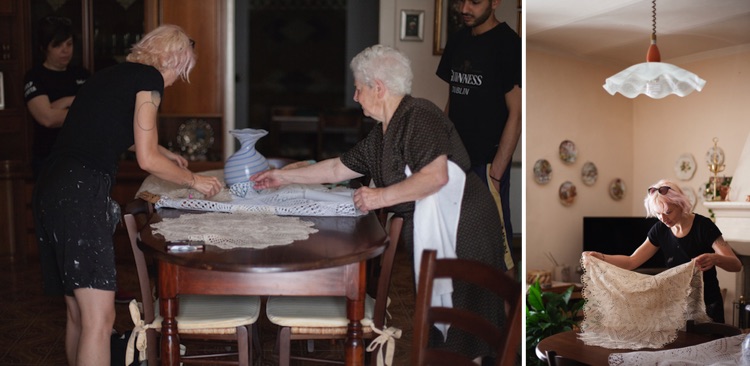
Signora Crisis shows her lacework to Nespoon. The type of lace done in the village inspired the Polish artist’s finished work.

One of the many old doors leading to abandoned spaces that Alice Pasquini has painted in Civitacampomarano. Photo Alice Pasquini

Street art by Alice Pasquini (Photo: Alice Pasquini)

“Resilienza” by Argentinian artist Francisco Bosoletti is an homage to the strength of the people who remain in the village. Working in positive and negative imagery, it’s part of a new technique he’s developing.
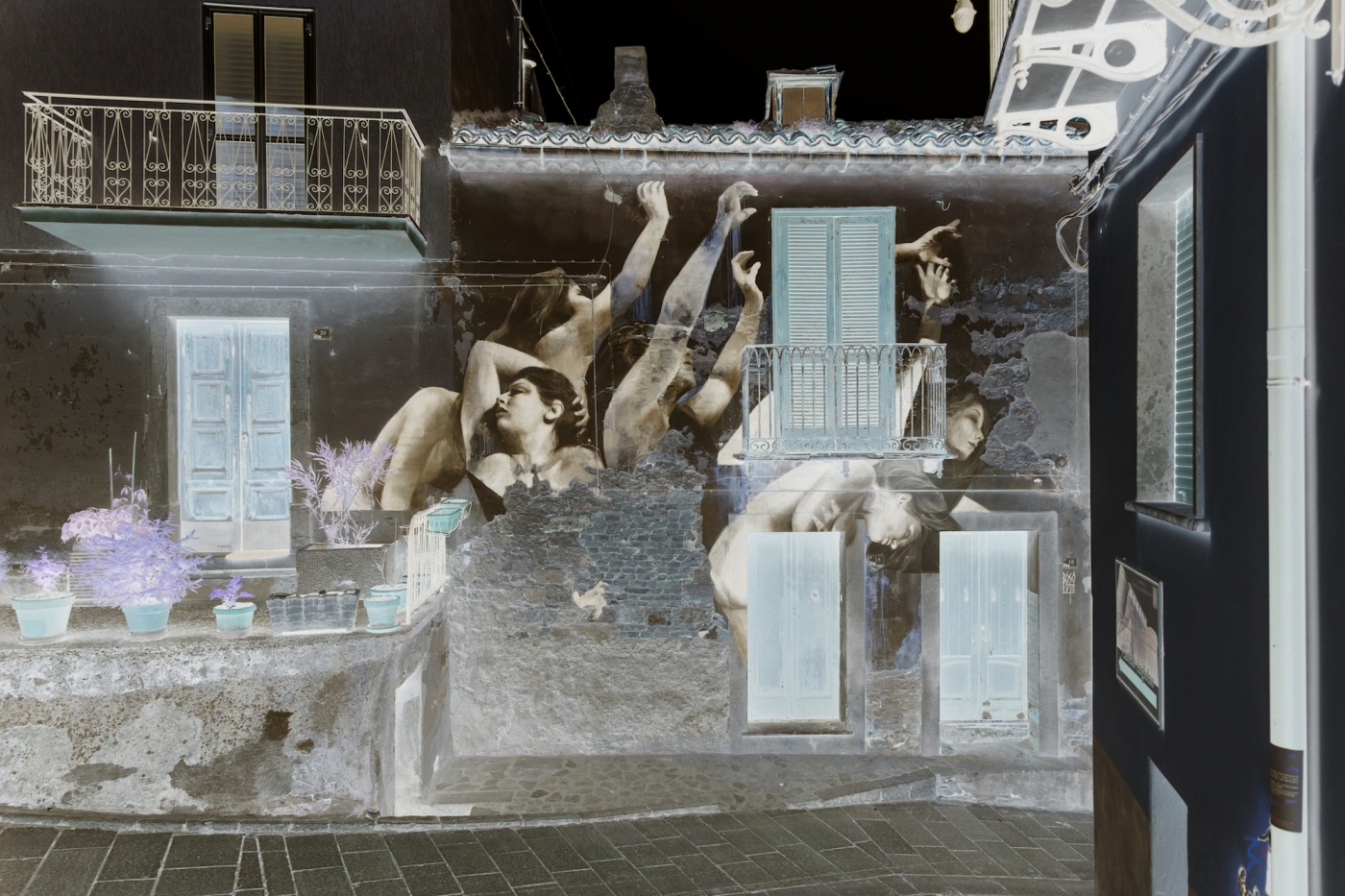
“Resilienza” in negative
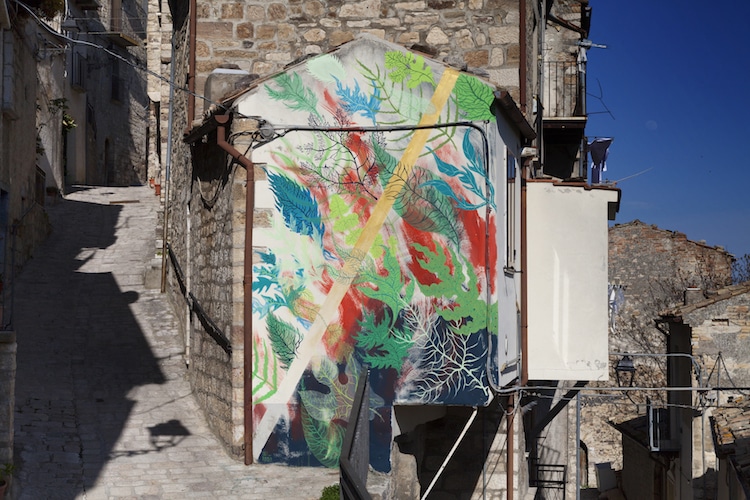
One of two walls painted by Gola Hundun, inspired by the natural surroundings of the village, which is positioned on rock.
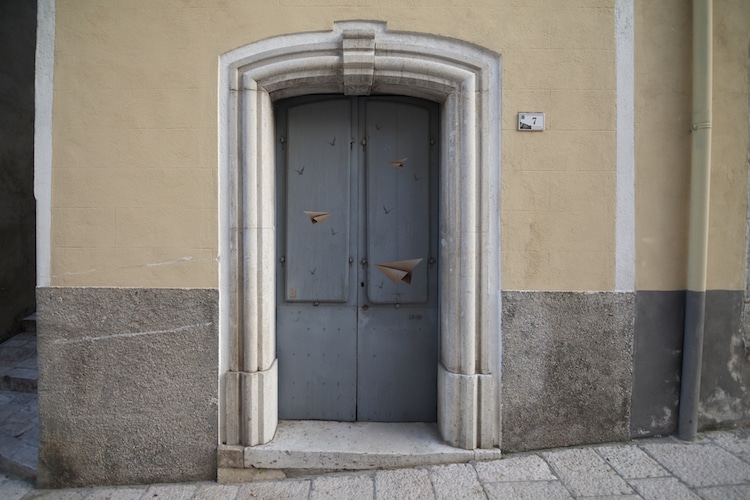
Returning to Civitacamporano after participating in the project last year, Italian artist UNO creates an illusion of origami on an old door.
Aside from murals, the street art festival also includes installation art, such as the wire art of Maria Pia Picozza.
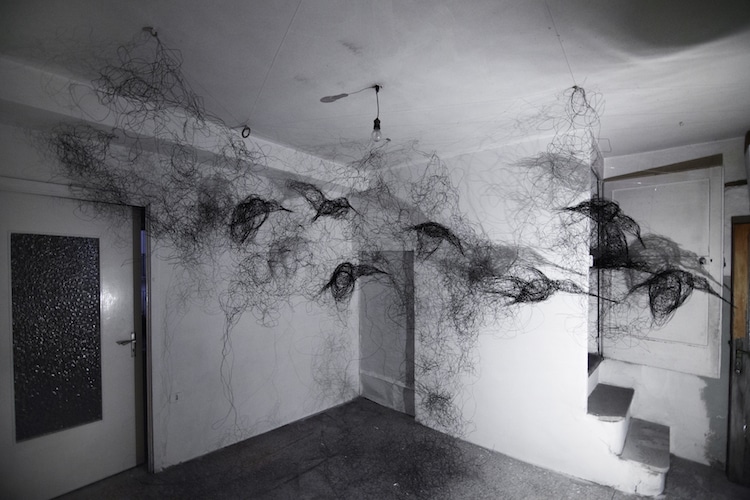
Wire art by Maria Pia Picozza
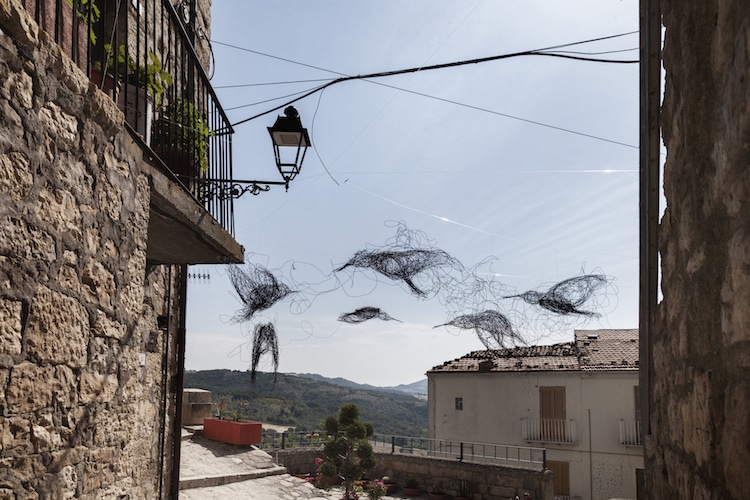
Wire art by Maria Pia Picozza
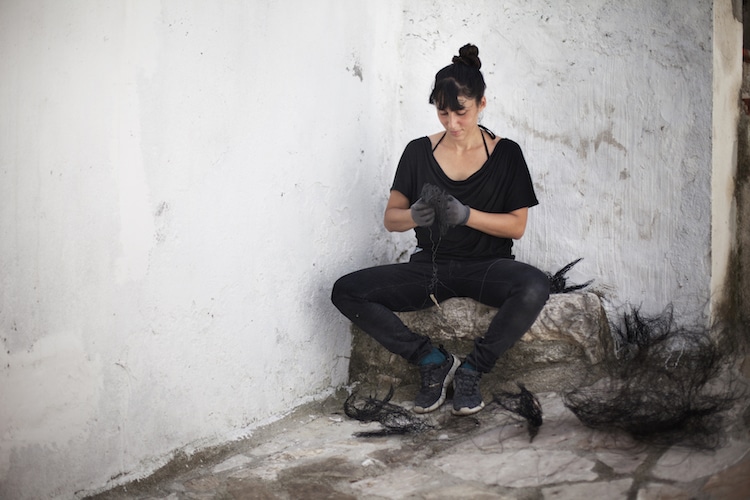
The community opens its doors to each artist, supporting the work in any way they can.
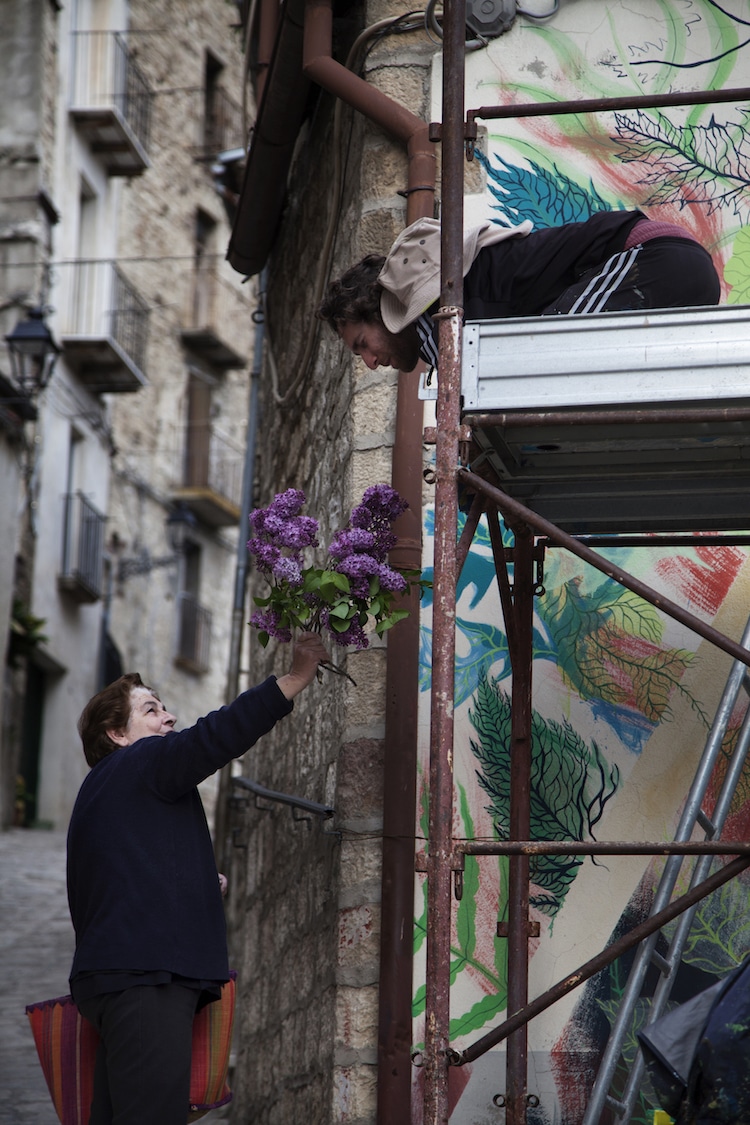

Women in town cooked traditional recipes for a street food event in June.
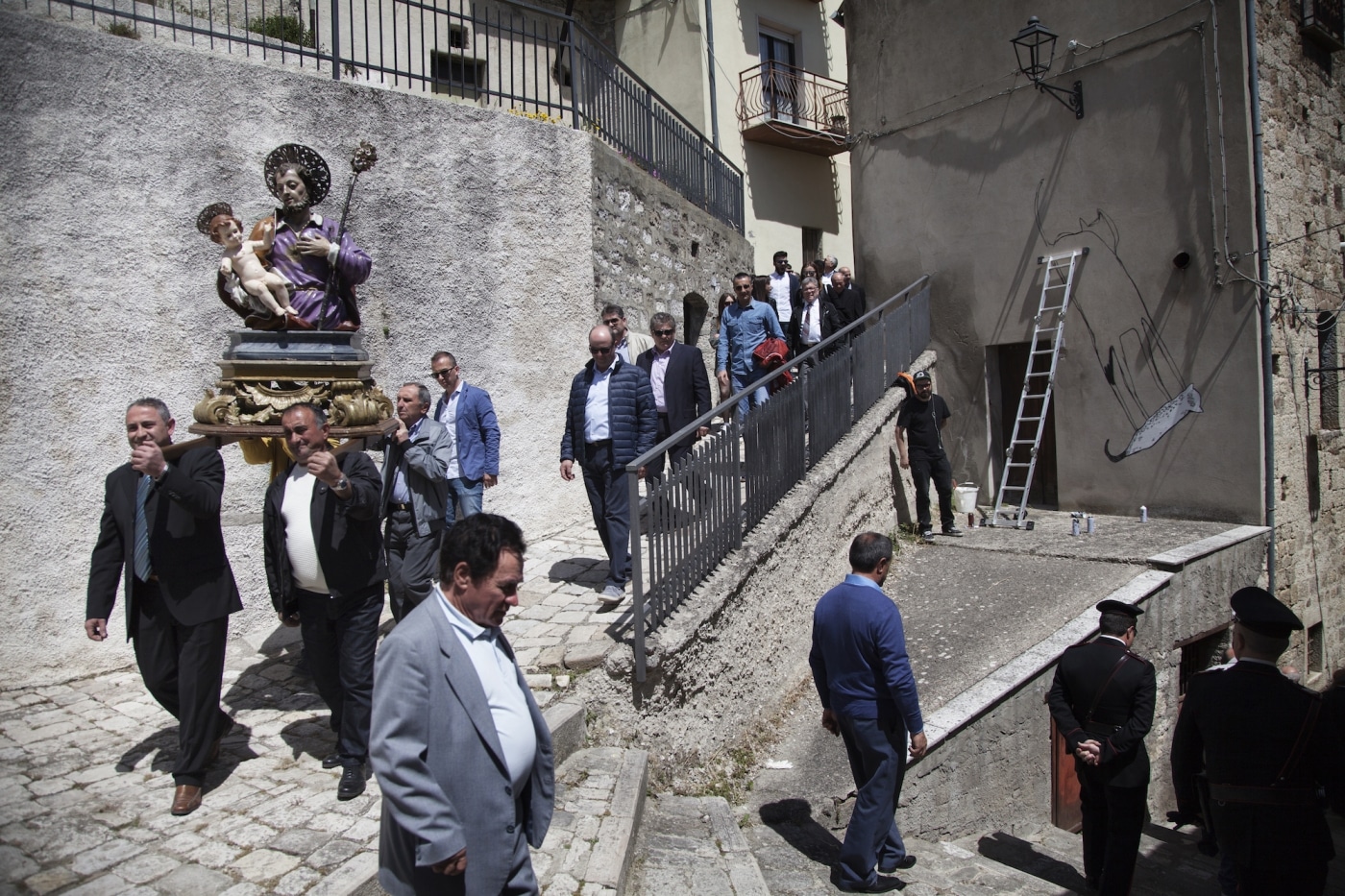
The Feast of St. Joseph passes by Brazilian artist Alex Senna as he works on his piece.
CVTà Street Fest: Website | Facebook | Instagram
All images via Alessia di Risio except where noted. My Modern Met granted permission to use photos by CVTà Street Fest.
Related Articles:
The Love-Filled Street Art of Alex Senna
